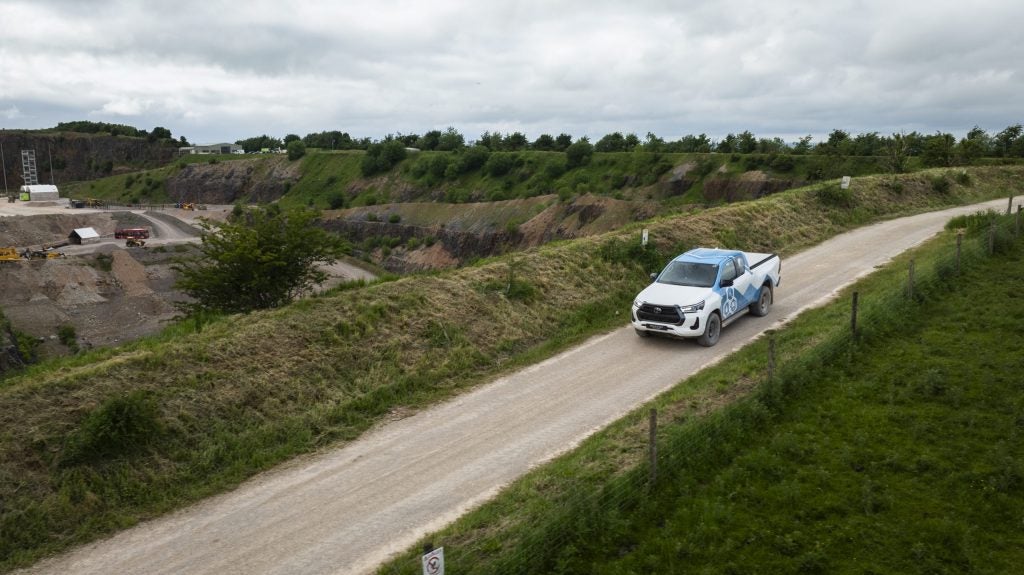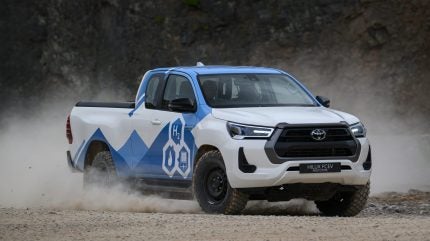
Toyota GB said its “ground breaking project” to develop a hydrogen fuel cell Hilux pick-up has moved to its final phase.
Ten fuel cell Hilux prototypes have been built at TMUK’s Burnaston facility in Derbyshire. Five vehicles are undergoing field testing to assess safety, performance, functionality and durability, generating test drive data in real world situations.
A further five vehicles are engaged in customer and media demonstrations, including at the forthcoming Olympic and Paralympic Games Paris 2024.
Know-how gained from the Hilux project will combine with the automaker’s 30 years of hydrogen fuel cell research and development to contribute the next generation of fuel cell technology. This will offer longer lifecycles, increased vehicle driving ranges and significantly reduced costs.
Toyota expects Europe to be one of the world’s largest hydrogen fuel markets by 2030, with steady growth in mobility and power generation applications. As a result, in December 2023, Toyota Motor Europe (TME) announced the Hydrogen Factory Europe, reflecting the company’s co-ordinated approach to the commercialisation of the technology, from development and production to sales and after sales.
The fuel cell Hilux prototype project is an important stepping stone to the further development of hydrogen technology and to stimulate a wider roll out of hydrogen ecosystems and infrastructure across Europe.

US Tariffs are shifting - will you react or anticipate?
Don’t let policy changes catch you off guard. Stay proactive with real-time data and expert analysis.
By GlobalDataThe prototype Hilux showcases how fuel cell technology can be integrated into a pickup truck.
Externally, the fuel cell model has the same dimensions and appearance as the current ICE Hilux line. Using an extra cab body style, it is 5,325mm long, 1,855mm wide and 1,810mm tall.
Power is delivered using core elements from the Mirai fuel cell system first introduced in 2015.
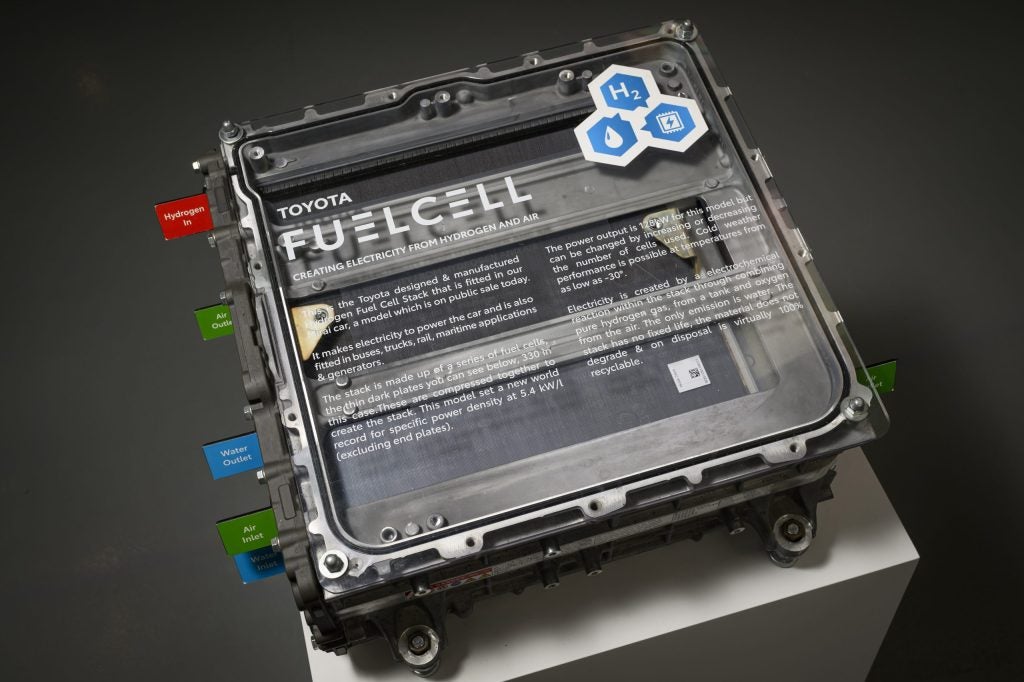
The fuel cell Hilux has an expected driving range of up to 373 miles/600km, further than might be achieved using a battery electric system. Thanks to the light weight, a higher payload and towing capability can be achieved, compared to other zero emission alternatives.
Hydrogen is stored in three high pressure fuel tanks, each containing 2.6kg to give a total capacity of 7.8kg. The tanks are mounted within the vehicle’s ladder frame chassis. The polymer electrolyte fuel cell stack contains 330 cells and is mounted above the front axle.
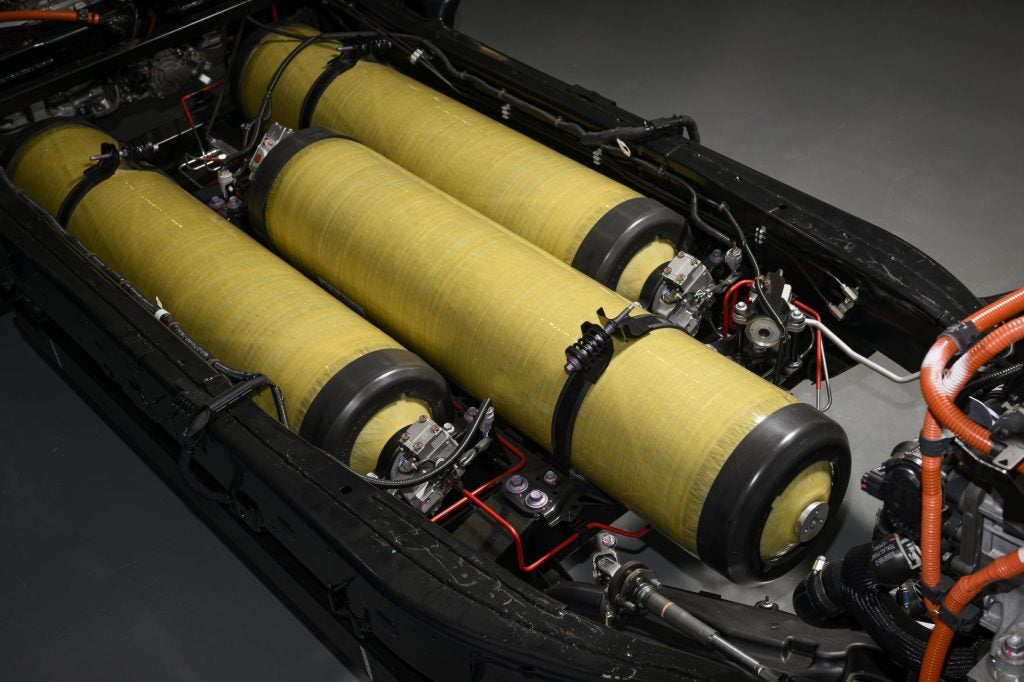
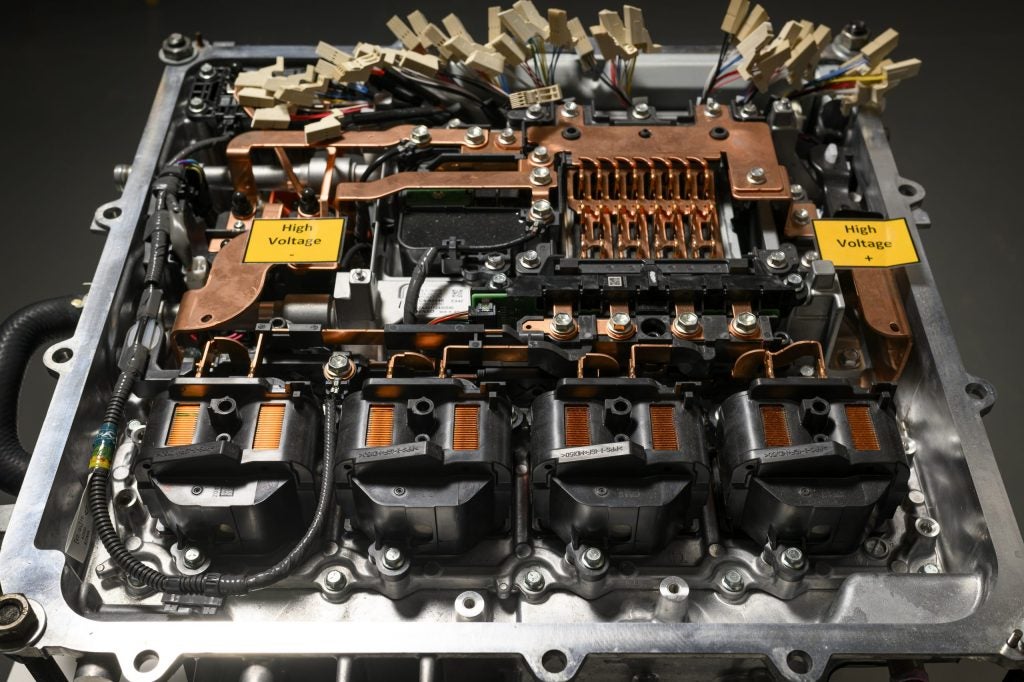
The fuel cell truck is rear wheel drive, via an e-motor on the rear axle delivering a maximum 134kW (180bhp, 182 DIN hp) and 300Nm of torque. When the vehicle is driven, the fuel cell produces no tailpipe emissions, only pure water.
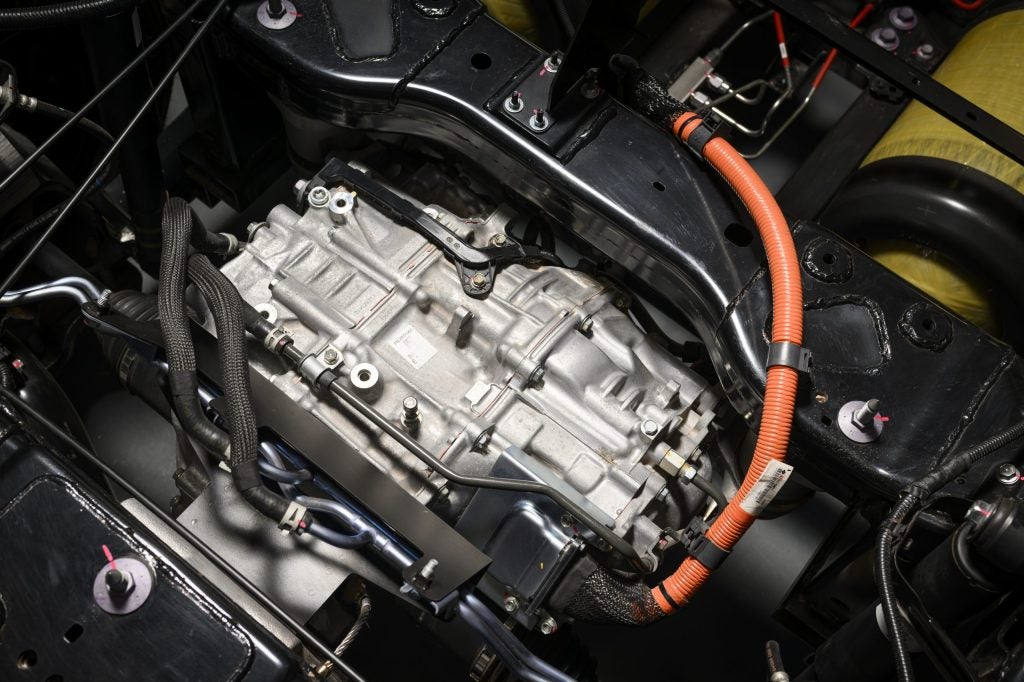
A lithium ion battery stores the electricity produced on board by the fuel cell. This is located in the rear load deck, above the hydrogen tanks. This avoids any loss of cabin space.
Project overview
The hydrogen fuel cell prototype project began with a feasibility study in early 2022 and has moved at pace towards its concluding phase. The initial study, undertaken by TMUK and TME, enabled subsequent funding from the UK government through the Advanced Propulsion Centre, a non-profit organisation which supports the development of cleaner technology and new mobility concepts.
An intense design and development programme ran from July 2022 to January 2023, also involving consortium partners Ricardo, ETL, D2H, Advanced Technologies and Thatcham Research, with additional support from Toyota Motor Corporation.
Parts manufacturing, including chassis frame welding, took place between February and May 2023, prior to prototype construction in a dedicated area within TMUK’s Burnaston plant. Ricardo supported preparations for the prototype build, carrying out design and development tasks and confirming the complete manufacturing process in parallel with teams at TMUK.
Construction took place in June and July 2023 and the first vehicle was completed in just three weeks. A further nine were assembled between July and December, ahead of a thorough evaluation phase that included test rig and track testing.
The 10 prototypes are now undergoing field testing alongside customer engagement activities. This will conclude the final phase of the demonstration project for the fuel cell Hilux.
